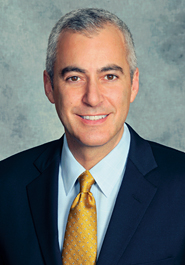Large investment banks and agency brokers are looking not only to increase their market share with the buyside, but have also been ramping up their efforts recently to sell their products and services to other broker-dealers.

The largest firms have noticed how the technology arms race among broker-dealers continues to spread globally and into new asset classes. And as it has, the costs for new and faster technology are growing alongside them. These are costs that the largest brokers have already undertaken, and they see opportunities to sell their products to firms that don’t have the resources to develop their own electronic trading tools.
As the broker-to-broker businesses grow at firms such as UBS, Morgan Stanley Electronic Trading and Instinet, so have the revenues. They’ve seen more demand for their algorithms, direct market access, analytics and connectivity to dark pools from broker-dealers of all stripes. In fact, the broker-to-broker business typically involves the same products and services that institutions use.
Broker-dealers want to be able to execute in equities, options and futures for their institutional clients on a global scale. But they don’t want to build the infrastructure, said Charles Susi, who runs electronic trading in the Americas for UBS.
"There’s a real opportunity for us with institutional brokers of all sizes in what has become a bit of an arms race around electronic trading platforms," Susi said. "They don’t necessarily have the resources, technology, know-how or quant resources to invest in an algo or DMA platform, or to invest in the low-latency technology that they need. So, there’s an opening here for some brokers to go to the larger brokers to buy services from us and then resell them to their clients."
UBS has been dealing with broker-dealers for a couple of years, predominantly the large online retail kind, said Stan Thurley, who heads broker services. More recently, though, UBS has made a more concerted push in the institutional brokerage space over the last six-to-12 months.
"From our standpoint, we had a real opportunity to take this massive, scalable platform we built-and that we invest in all the time-and package it up to power other brokers," Susi added.
Why do they do it? It’s the revenues, which UBS, Instinet and MSET each would not disclose, but all acknowledge as sizable. It’s also for the order flow, Susi said.
"There’s a benefit in all that," he added. "It’s not just that we get to process a lot more orders out there. It’s also that we become even more of a liquidity center across different markets. The more flow we have, particularly when it’s from a broker working client flow, the more natural flow that we can bring into our liquidity pool to cross with other client flow."
To this end, UBS has seen the algo and DMA flow to its dark pool through its broker-to-broker business double.
At MSET, the broker-to-broker business only really started to grow in the past few years, said Keith A. Casuccio, an executive director who runs the global broker-to-broker business there. MSET decided to focus on the segment after a number of broker dealers started knocking on the door looking for help on the technology front.
"It’s a large client base that we just hadn’t gone after, that we hadn’t focused on until recently," Casuccio said. "We’re a client-based business. And we have a number of products that we thought the client base could benefit from."
For its part, Instinet has seen increased demand by mid-tier broker-dealer clients recently. But client demand, as with UBS and MSET, spans the largest and smallest sellside firms, said Bill Cody, who runs Instinet’s broker-dealer sales group.
Some, such as the larger clients, want to connect to Instinet’s dark pool; some to use its smart routing; others want to execute through its execution management system, Newport. Some use all of the above, or a combination of services.
"We’ve definitely seen an increase in [the firm’s broker-to-broker business]," Cody said, "especially in the last two years."
That’s when Instinet set up a group dedicated specifically to sellside customers. Jonathan Kellner, Instinet’s president, took a closer look at the business and the firm’s relationships with its broker-dealers.
"I thought it made sense to centralize that and treat them as clients and provide them with a better level of service," he said. "It gives them one point of contact and a central place to communicate."





